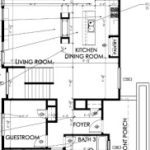CRM Plumbing
 Once the outside structure of your CRM is solid, it’s time to think about the infrastructure within your CRM system. How will the information need to flow within the system and externally? What types of connections or integrations will need to be installed to pipe the information where it needs to be? Failure to think about proper information flow during the construction phase can throw a wrench into your CRM plans later, leading to potential backups. When putting together plans for your CRM ‘plumbing’, here are some things to consider:
Once the outside structure of your CRM is solid, it’s time to think about the infrastructure within your CRM system. How will the information need to flow within the system and externally? What types of connections or integrations will need to be installed to pipe the information where it needs to be? Failure to think about proper information flow during the construction phase can throw a wrench into your CRM plans later, leading to potential backups. When putting together plans for your CRM ‘plumbing’, here are some things to consider:
What systems should connect with your CRM System?
First, think about whether CRM users may need to tap into information from external software or systems. If so, what types of fittings will be needed to pipe this information into the CRM? Systems to consider may include:
- eMarketing systems to bring in activities and analytics related to e-mail campaigns and events
- Time and billing systems to bring in Client and/or financial information
- HR systems to automate and populate user creation and information
- External data feeds to enhance information for people or company records
- Opportunity pipeline software to add information and activities related to business development
Next, think about whether information within the CRM system will need to be circulated to external software and systems such as:
- eMarketing systems to pull lists and manage events and campaigns
- Intranets or portals to allow users to view CRM information combined with other types of information to provide a more complete picture
- Opportunity pipelines to easily access Client and prospect data
- Proposal and experience databases to gather biographical information and track information related to pitches and RFPs
Getting your CRM system properly ‘plumbed’ before deployment can help to ensure that your users will ultimately benefit from the information flow.





Write a comment: